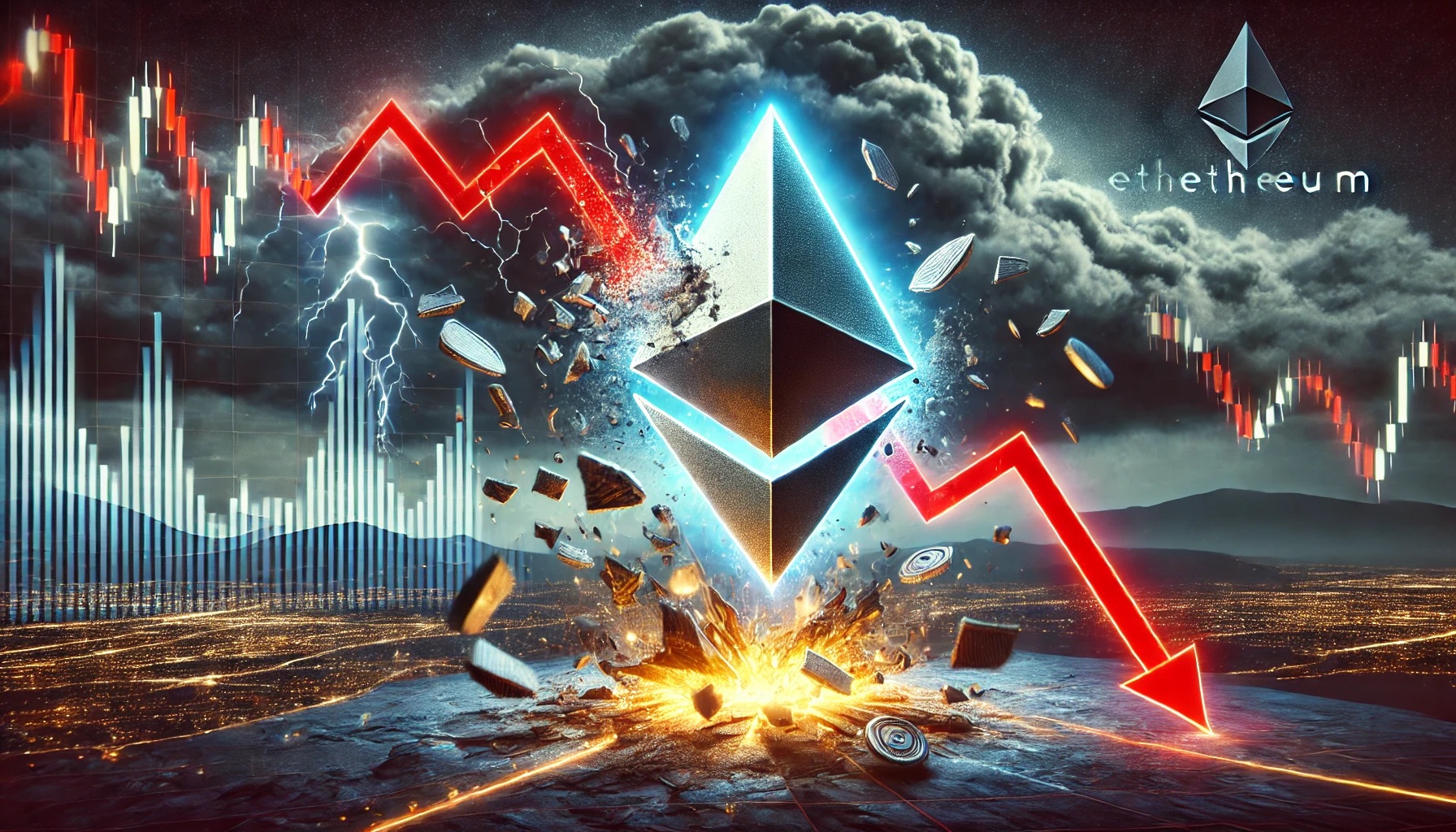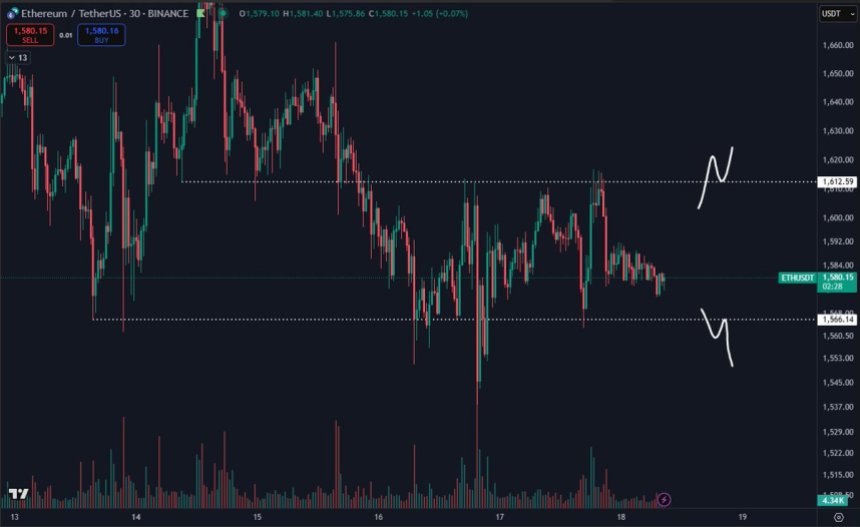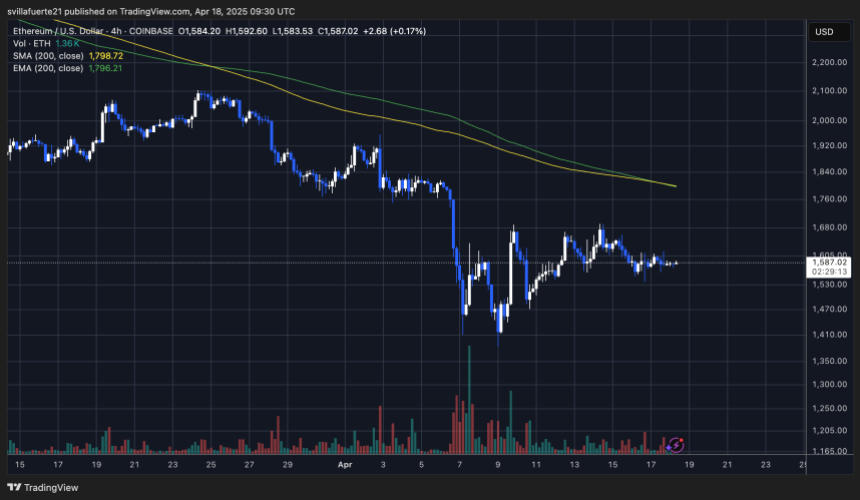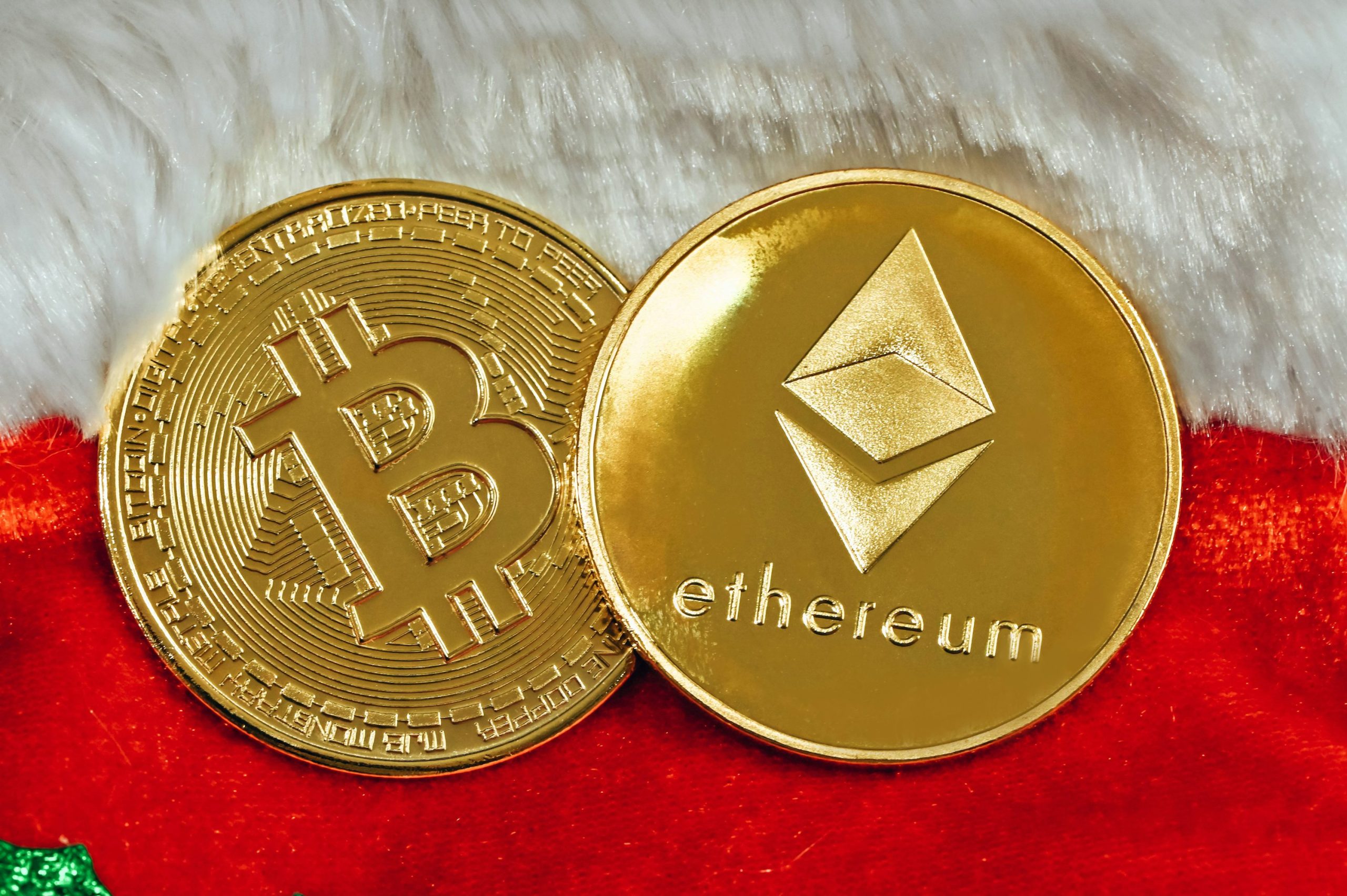Ethereum
Ethereum Sees 43% Crash In Active Addresses, What’s Going On?

The market sentiment towards Ethereum (ETH) has turned relatively bearish, largely due to the cryptocurrency’s recent price volatility. This negative sentiment is evident in Ethereum’s new active addresses, having crashed by a whopping 43%, underscoring reduced network activity and investor confidence.
New Active Addresses On Ethereum Decline
Data from The Block is showing notable fluctuations in Ethereum’s network activity, as the number of new active addresses has seen a sharp unexpected decline over the past three months.
On June 27, new active addresses on the Ethereum network surged to 138,620 before dropping drastically to around 89,000 in the first few weeks of July. While the volume fluctuated between 80,000 and 95,000 in August, it soon jumped back above 100,000 at the end of the month.
Related Reading
Despite Ethereum experiencing a significant uptick in its price recently, the new active addresses on its network dropped as low as 78,100 on September 24, marking a 23.43% crash. Currently, the number of new active addresses on Ethereum’s network is still below 80,000, reflecting more than a 44% crash from the last three months.
Compared to June 9 when the total active addresses on the Ethereum network surged impressively to 702,857, the current number of addresses has declined by 5.69%. Moreover, on September 22, the total active address count fell drastically to 574,073, underscoring an 18.32% decrease from the previous June 9 high.
Typically, when a crypto network experiences a drop in its new active address count, it indicates a decrease in user engagement, leading to a decline in the overall network activity and transaction volume. This decrease can be seen in the data provided by IntoTheBlock, which shows that the total volume of large transactions on the Ethereum network rose to 2.91 million on July 5, but declined to 1.79 million on September 29, reflecting a 38.4% drop.
Despite the significant drop in new active addresses on Ethereum, market intelligence platform, Santiment has disclosed that the Ethereum network activity is finally picking up. However, this rise in network activity also coincides with a significant increase in gas fee levels.
ETH Loses Top Spot In DEX Volume Rankings
On September 25, Ethereum lost its position as the top cryptocurrency with the highest 24-hours Decentralized Exchange (DEX) volume. Solana (SOL) had outperformed Ethereum, claiming the top spot with a 39.77% increase in its DEX volume, which climbed to $1.123 billion.
Related Reading
At the time, Ethereum’s DEX volume was approximately $1.118 billion after recording a modest 8.92% surge. While Solana briefly stole the spotlight, Ethereum swiftly rebounded and has since held on to its leading position.
As of writing, the cryptocurrency’s 24-hour DEX volume has surged by 11%, reaching $1.559 billion, according to DeFiLama. In contrast, Solana experienced a much larger increase of 32.94%, however, its volume still sits below Ethereum’s at $1.251 billion.
Featured image created with Dall.E, chart from Tradingview.com
Ethereum
Ethereum Price Stalls In Tight Range – Big Price Move Incoming?

Reason to trust

Strict editorial policy that focuses on accuracy, relevance, and impartiality
Created by industry experts and meticulously reviewed
The highest standards in reporting and publishing
Strict editorial policy that focuses on accuracy, relevance, and impartiality
Morbi pretium leo et nisl aliquam mollis. Quisque arcu lorem, ultricies quis pellentesque nec, ullamcorper eu odio.
Ethereum is trading at critical levels after enduring weeks of aggressive selling pressure. Since retracing below the key $2,000 mark, the second-largest cryptocurrency has struggled to regain bullish momentum. Currently down 21% from that level, ETH continues to hover near $1,580, reflecting a clear lack of conviction from both buyers and sellers.
Related Reading
The market has entered a period of extreme indecision. According to top analyst Daan, Ethereum’s price has remained notably compressed, barely moving over the past two days. This type of consolidation often precedes sharp price action in either direction, and traders are watching closely for signs of a breakout or breakdown.
Macroeconomic uncertainty continues to influence investor sentiment, with global trade tensions and monetary policy concerns keeping pressure on risk assets like Ethereum. For now, bulls must reclaim the $1,850 resistance zone to confirm a trend reversal, while a drop below $1,500 could open the door to deeper losses.
As volatility builds in the background, the current compression could be the calm before a storm—setting the stage for Ethereum’s next decisive move. Will it break out to the upside, or is more downside in store?
Ethereum Compression Signals Breakout As Macro Pressure Builds
Ethereum is facing a critical test as it trades at compressed levels following weeks of sustained selling pressure. The broader crypto market remains under pressure as global tensions escalate. US President Donald Trump’s trade war with China continues to shape macroeconomic sentiment, leaving investors cautious across all high-risk asset classes.
Despite last week’s announcement of a 90-day tariff pause for all countries except China, uncertainty remains. The unresolved status of US-China trade relations continues to weigh on markets and is one of the primary factors driving hesitation in price movement. For Ethereum, this has translated into extremely low volatility and a stalled price structure.
Daan shared insights suggesting that Ethereum’s price has been “extremely compressed” and has not shown meaningful movement for the better part of two days. According to Daan, this type of compression usually precedes a significant breakout—though the direction of that move remains unknown.

Investors and traders alike are closely monitoring this setup, as compressed price action typically leads to large, momentum-driven shifts. With broader macro risks still in play, Ethereum’s next move could define the short-term trend and set the tone for the market in the weeks ahead.
Related Reading
ETH Bulls Aim To Regain Control
Ethereum is trading at $1,590 after several days of sideways price action, hovering between support at $1,550 and resistance near $1,700. Despite holding above the lower end of this range, ETH has struggled to generate the momentum needed to break out and confirm a short-term recovery.

For bulls to establish a stronger position, ETH must push above the 4-hour 200-day moving average (MA) and exponential moving average (EMA), both of which continue to act as dynamic resistance. A breakout above these indicators could trigger renewed interest from traders and signal the beginning of a recovery phase.
However, the true test lies at the $2,000 level—a major psychological and technical resistance zone. Reclaiming this level would mark a shift in market sentiment and open the door to higher targets.
Related Reading
On the downside, failure to gain ground above the current range and a drop below $1,550 could quickly drag ETH below $1,500, increasing the risk of a deeper correction. For now, Ethereum remains in a consolidation phase, and the next decisive move will likely dictate whether bulls regain control or if sellers push prices into lower demand zones.
Featured image from Dall-E, chart from TradingView
Ethereum
Ethereum Fee Plunges To 5-Year Low—Is This A Bottom Signal?


On-chain data shows the Ethereum transaction fee has dropped to the lowest level in years recently. Here’s what this could mean for ETH’s price.
Ethereum Average Fees Now Valued At Just $0.168
In a new Insight post, the on-chain analytics firm Santiment has discussed the latest trend in the Average Fees of Ethereum. The “Average Fees” is a metric that, as its name suggests, keeps track of the average amount of fees that senders on the ETH network are attaching with their transactions.
This indicator’s value directly correlates to the amount of traffic that the blockchain is dealing with. The reason behind this lies in the fact that the network only has a limited capacity to handle transfers.
When the chain is busy, transfers can remain stuck in waiting until the transactions ahead of them clear out. Those who want their transactions to be processed ASAP can choose to attach a larger-than-average fee, so that the validators prioritise them.
In times of especially high traffic, this kind of competition among users can quickly drive the Average Fees up to significant levels. When there is little activity, however, senders have little incentive to pay any notable amount of fees, so the metric’s value can remain low.
It would appear that Ethereum has been witnessing the latter kind of conditions recently, as the Average Fees have registered a drop.
Looks like the value of the metric has declined to a low level in recent days | Source: Santiment
As displayed in the above graph, the Ethereum Average Fees have fallen to a low of $0.168 recently, which is the lowest that it has been since 2020. This means that activity on the network is historically low at the moment.
According to the analytics firm, this may not actually be so bad from a trading perspective, as low fee periods can often precede rebounds in the cryptocurrency’s price.
Below is a chart that shows an example of this trend in action:

The past trend in the transaction fees of ETH | Source: Santiment
As is visible in the above graph, the Ethereum Average Fees falling under the $1 mark back in 2023 led to bullish momentum for the asset. The explanation behind this pattern may lie in the fact that low-fee periods can indicate disinterest from the crowd.
Historically, ETH and other digital assets have tended to move in a way that goes contrary to the expectation of the majority. This means that a lack of optimism can lead to rebounds, while excessive hype can result in tops. From the chart, it’s apparent that ETH’s Q1 2024 top came as the metric surpassed $15, indicating a plethora of excitement.
“Generally, fee levels under $1 are a pretty promising sign that the crowd has become disinterested,” notes the analytics firm. “Just remember that there is no set guaranteed “bottom” or “top” level every time fee costs breach below or above a certain level.”
ETH Price
At the time of writing, Ethereum is trading around $1,600, up more than 1% in the last 24 hours.
Looks like the price of the asset hasn't moved much recently | Source: ETHUSDT on TradingView
Featured image from Dall-E, Santiment.net, chart from TradingView.com

Editorial Process for bitcoinist is centered on delivering thoroughly researched, accurate, and unbiased content. We uphold strict sourcing standards, and each page undergoes diligent review by our team of top technology experts and seasoned editors. This process ensures the integrity, relevance, and value of our content for our readers.
Ethereum
Ethereum Investors Suffer More Losses Than Bitcoin Amid Ongoing Market Turmoil


Given the continued volatility in the general crypto market, several major digital assets such as Ethereum and Bitcoin experienced a decrease in investor participation. As a result, the two crypto giants were faced with significant selling pressure, with ETH recording more losses than Bitcoin.
Ethereum Outpaces Bitcoin In Recent Losses
Over the last few days, Ethereum and Bitcoin have struggled with notable bearish pressure that has hampered their upward movements. During this volatile period, seasoned market expert and host of the Crypto Banter show, Kyle Doops, has outlined substantial losses in both assets as observed in the 6-Hour Rolling Losses metric.
Ethereum’s value has declined more precipitously than that of several of its competitors, triggering selling pressure among investors. During the recent sell-off, Ethereum holders have locked in $564 million in losses, highlighting growing investor caution and a shift in market sentiment.
According to the expert, this is one of the worst losses ETH investors have experienced since the 2023 bull began. The notable losses raise concerns about ETH’s short-term resilience and future performance as volatile market conditions constantly affect investors’ confidence in the altcoin.
Kyle Doops highlighted that while losses are decreasing, this could imply that the market is adjusting to lower pricing. With the market adapting to lower price conditions, the market expert is confident that capitulation is still present.

In another X post, Kyle Doops reported that Bitcoin is navigating rough waters as it suffers significant losses amid persistent market turbulence. This huge loss has also triggered speculations about the sustainability of BTC’s renewed upward trend to key levels like $85,000.
Data from the expert reveals that investors of the largest cryptocurrency asset experienced about $250 million in realized losses in just 6 hours after last week’s sharp drop. In the current market cycle, this loss is one of the biggest so far.
However, looking at the chart, each leg down is exhibiting less pain, which suggests that sellers might be running out of ammo. As key technical resistance levels continue to hinder BTC’s uptrend, the future of the flagship asset is becoming increasingly uncertain.
Where One Of ETH’s Strongest Support Lies
ETH has made a brief rebound to the $1,600 mark after a sudden drop on Wednesday. Delving into the price action, Ali Martinez, a crypto analyst, has underlined a crucial support zone for Ethereum, where significant investor interest was seen in spite of continued price fluctuation.
While the altcoin slowly rebounds, Ali Martinez highlighted that the $1,528.50 is a key support level in its price dynamics. This is due to the notable accumulation around this level. On-chain data shows that about 2.61 million wallet addresses purchased more than 4.82 million ETH in this zone, making it a robust area of support against downside pressure.
Featured image from Unsplash, chart from Tradingview.com

Editorial Process for bitcoinist is centered on delivering thoroughly researched, accurate, and unbiased content. We uphold strict sourcing standards, and each page undergoes diligent review by our team of top technology experts and seasoned editors. This process ensures the integrity, relevance, and value of our content for our readers.
-

 Altcoin24 hours ago
Altcoin24 hours agoHashKey Launches First XRP Tracker Fund With Ripple’s Backing
-

 Market23 hours ago
Market23 hours agoBitcoin Price Gears Up for Next Leg Higher—Upside Potential Builds
-

 Market21 hours ago
Market21 hours ago100 Million Tokens Could Trigger Decline
-

 Altcoin18 hours ago
Altcoin18 hours agoEthereum ETFs Record $32M Weekly Outflow; ETH Price Crash To $1.1K Imminent?
-

 Market10 hours ago
Market10 hours agoPi Network Roadmap Frustrates Users Over Missing Timeline
-

 Market9 hours ago
Market9 hours agoSolana (SOL) Price Rises 13% But Fails to Break $136 Resistance
-

 Market16 hours ago
Market16 hours agoHow $31 Trillion in US Bonds Could Impact Crypto Markets in 2025
-

 Market22 hours ago
Market22 hours agoVietnam Partners with Bybit to Launch Legal Crypto Exchange























